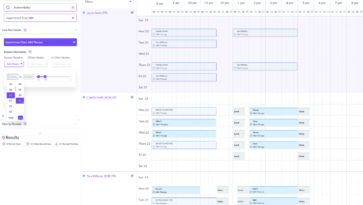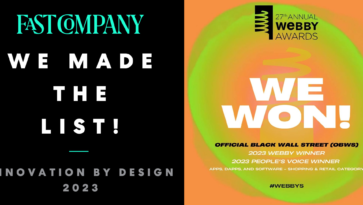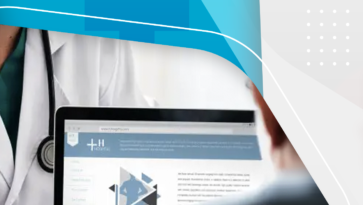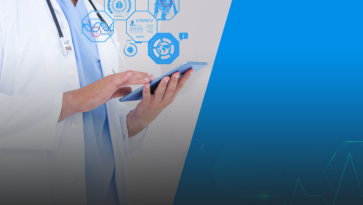We spend almost a third of our adult life working. And for most of us, that means we spend almost a third of our adult life in an office.
And unless you work in Silicon Valley, where millions in funding are tossed around like a teenager at his bar mitzvah, your office space is probably pretty boring.
Why are offices so boring? Why are most of them solely focused on functionality? Where is the aesthetic? Where is the fun?
Why do we have such low standards for where we spend a third of our adult lives?
I know this may seem like something you don’t have control over.
“My company can’t afford a nice work environment.”
“Our building is just not nice, there’s nothing I can do.”
“We don’t have room for any extra amenities.”
But there is something you can do. You can ask for a ping pong table for the office.
“My boss would never go for that.”
You’re right, they probably wouldn’t. But they will go for something that will boost productivity, creativity, problem-solving, employee health, relationships and fun vibes. Let me explain.
Taking breaks is good for productivity, creativity, and problem solving.
Some managers might be wary about introducing a “distraction” into the office. And they’re not wrong. Ping pong is a distraction. But why does “distraction” have such a bad rep?
Distraction is good for us. Working non-stop is an outdated philosophy from the industrial revolution. We need breaks. Our minds need breaks. Our bodies need breaks from sitting in our chairs all day. (Shameless plug: to get a break from sitting all day, try Standee Bamboo Standing Desks.)
Why do we need breaks? Science.
When we aren’t focusing on a task, a network in our brain is activated, called the default mode network. The default mode network can be thought of the day-dreaming state. It’s the network that is activated when we’re not forcing certain parts of the brain to be activated. It’s our default. Our baseline.
Really cool things happen when this default mode network is activated. We problem solve. We have epiphanies. We are creative. If you don’t believe me, there is a whole bunch of evidence here. For further proof, think of a time when you couldn’t recall someone’s name. Or couldn’t remember what you were going to say. You struggle for minutes, and then give up. Then, magically, when you aren’t focusing on it, it comes to you.
“With the right kind of distraction the default mode network may be able to integrate more information from a wide range of brain regions in more complex ways than when the brain is consciously working through a problem.” — Ferris Jabr, Scientific American
In other words, you do some of your best thinking when not trying to think at all. How awesome is that?
People aren’t taking enough breaks
Despite all these benefits, current office atmospheres typically discourage taking breaks. In a study performed by Staples, 55 percent of employees reported that they don’t feel that they can leave their desk to take a break.
In a separate study, conducted by Right Management, they found that 81 percent of office employees are not taking a regular, normal lunch break. Here’s the breakdown:
Only 20 percent took a real lunch break almost every day.
Another 38 percent took a lunch break but ate lunch at their desk.
And almost 30 percent rarely took a lunch break at all.
This is a problem. Science says we need breaks, yet we don’t feel comfortable taking them. How do we solve this problem?
Encourage breaks by getting a ping pong table. As a result, you’ll get increased productivity, creativity, and problem solving.
An easy and fun way to take a break in real life
You might be thinking, “Okay, so distraction is good, but why ping pong?”
Well, the cool thing about ping pong is that it is “in real life”. Rather than taking a break on your phone, ping pong forces you to actually interact with another human being.
The other cool thing about ping pong is that anyone can play.
Never played before? Ping pong is a simple back and forth game. You’ll get the hang of it.
Bad knee? Ping pong is easy on the joints.
Not very good? Unlike other games, highly skilled players can play with lower skilled players and still enjoy it. Just try to get a rally going. Count how many hits you can get in a row. Try to get to 30.
It really doesn’t matter your age, fitness or skill level. You can play.
Ping pong — it’s the new kale
Ping pong is also a great way to take a break because it’s healthy for you in many different ways.
It stimulates the brain, it helps improve your hand-eye coordination, your reflexes, agility, and flexibility. It’s also good for you physically. An average 150-pound person can burn 70 calories in one 15-minute match. That’s like, one donut hole!
Fun way to debrief after meetings
Debriefing over ping pong is a relatively new innovation here at Sidebench. It started after one particular client meeting where we were left with more questions and problems than answers and solutions. I was feeling dejected, frustrated, and uncertain about the future of the project. Rather than taking that stress back to my desk, a colleague and I hit the ball back and forth for about ten minutes. As we got into a flow, we were able to quickly let out our frustrations and immediately start brainstorming ideas on how to move the project forward. At the end of the rally, I felt energized and motivated to tackle the problems at hand. Without the quick rally, that stress might have translated into my work and into my conversations with my clients and coworkers. And no one wants that.
Where there’s will there’s a way
If your boss hits you with the “sounds great, but we don’t have room for a ping pong table”, then do what we did: turn your conference table into one.

Conference tables are perfect ping pong tables — most of the time they aren’t used, they’re in a nice-sized room, and the door can be closed to muffle sound. All you need is a net and some paddles and you’re set!
Good vibes
At Sidebench, ping pong has been a great way to build relationships between coworkers. Because anyone can play, it’s an easy way to start a relationship with a coworker you don’t know very well or to get to know someone on a more personal level.
It’s building these relationships with your coworkers that creates good, positive vibes in an office environment.
And once you have that, spending a third of your life there doesn’t seem so bad.
— Kyleigh Smith, UX Designer at Sidebench
Kyleigh is a UX Designer at Sidebench. If she’s not interviewing people about their goals and pain points, or designing experiences to address them, she’s probably eating french fries or thinking about innovative products. Kyleigh is originally from St. Louis, and has since made LA her new home after graduating from UCLA with a degree in Cognitive Science. Since then, she has been loving the world of design and working with the awesome people at Sidebench.
—
This article can also be found on Medium






